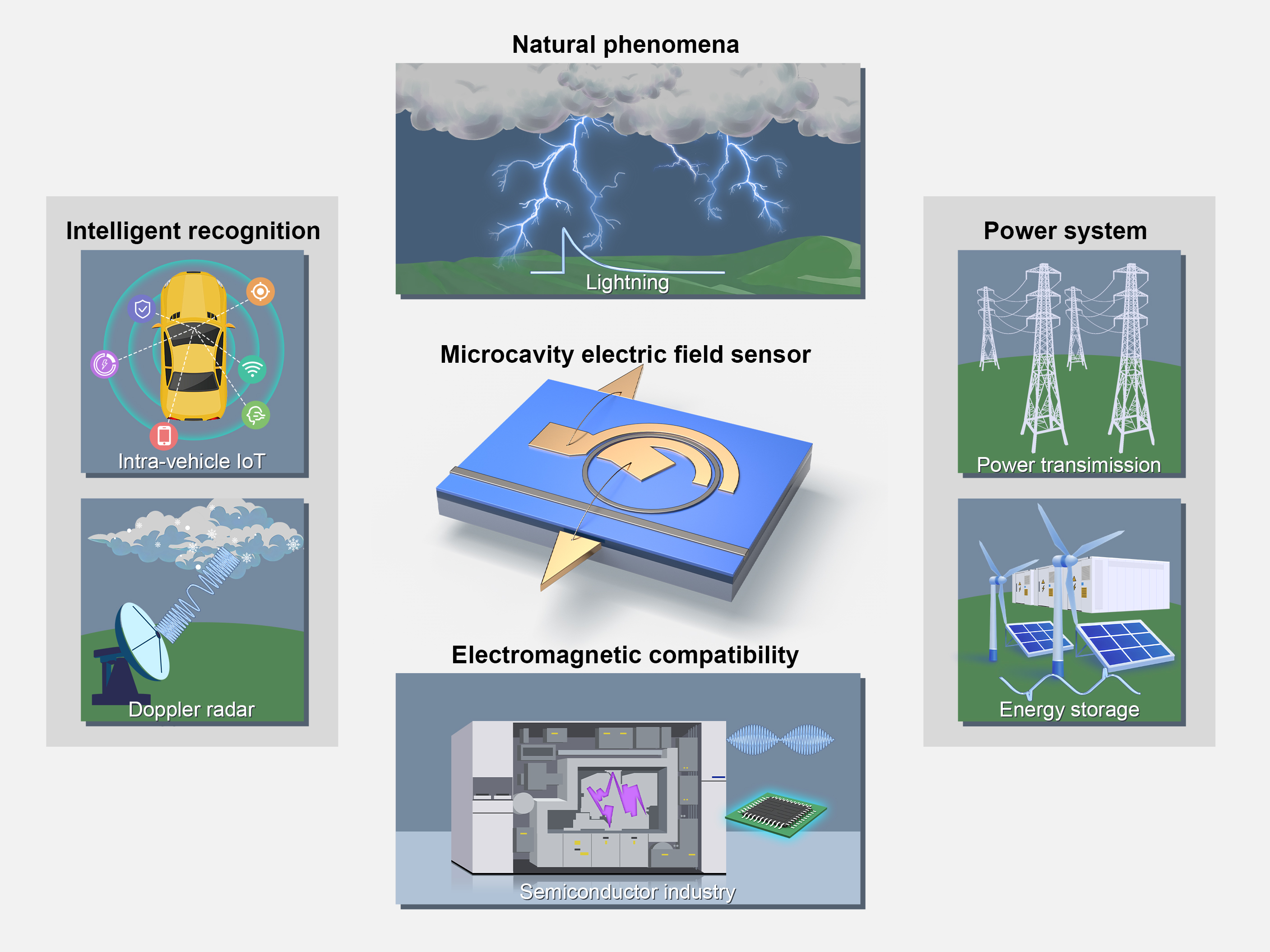Weak electric field measurement plays an irreplaceable role in industry and scientific research. Optical electric field measurement has fast response and wide bandwidth. In the past few decades, integrated optical electric field sensors based on bulk lithium niobate have made great progress. However, due to limitations of materials and processes, there are still problems such as insufficient sensitivity and lack of long-term stability. Recently, the Advanced Electromagnetic Materials and Systems Team of the Department of Electrical Engineering of Tsinghua University has made important progress in the research of high-sensitivity, miniaturized electric field sensors.

The thickness of thin film lithium niobate (LNOI) is only a hundred nanometers. As a new material, it provides the possibility to overcome the above shortcomings, but it is completely unable to be processed by traditional processes. Since 2018, the research team has focused on the key problem that LNOI is difficult to process. After several years of exploration, it has independently developed a low-loss, high-efficiency processing technology and achieved high-quality etching of waveguides with a transmission loss of 0.13dB/cm. Different from the previous use of several centimeter-long interference light paths to achieve electric field sensing, the project team designed and implemented a high-quality factor micro-ring resonant cavity with a size of hundreds of microns based on LNOI. By increasing the interaction between microwaves and light waves, it essentially greatly improved the sensitivity. Combined with the Pound-Drever-Hall method, a laser frequency-locked microcavity electric field sensing scheme is formed, which further improves sensitivity. Finally, an electric field sensor with a detection sensitivity of 5.2μV/(mHz1/2) and real-time measurement of electric field intensity and phase was realized.

The measured initial minimum measurable field strengths of sensor device 1 (highest quality factor) and sensor device 2 (lowest quality factor) are 8.8 and 29.5μV/(mHz1/2) respectively, the bandwidths are 414 and 101MHz respectively, and the dynamic ranges are 123 and 122dB. After further reducing the system noise, the minimum measurable field strength of Device 1 reaches 5.2μV/(mHz1/2), which is the most sensitive electric field sensor reported with the same bandwidth in the field of classical physics.


